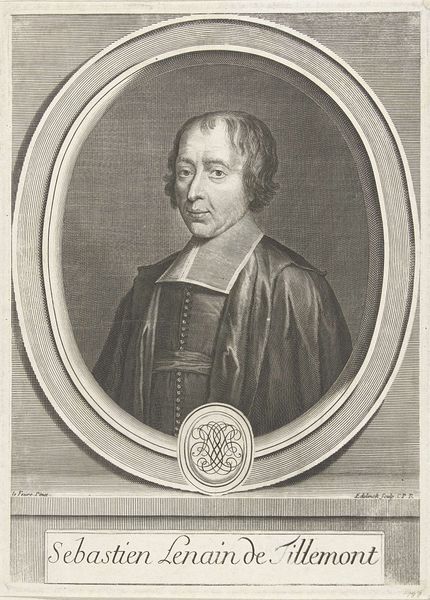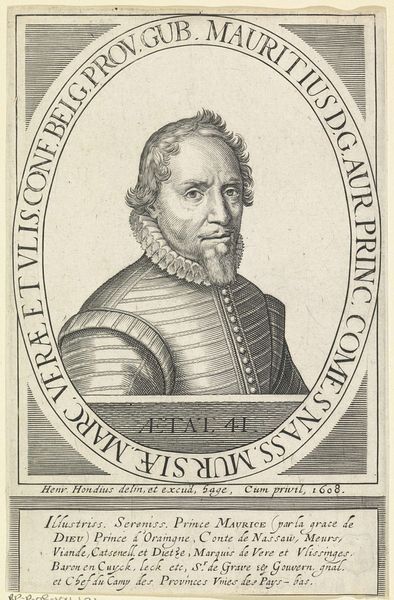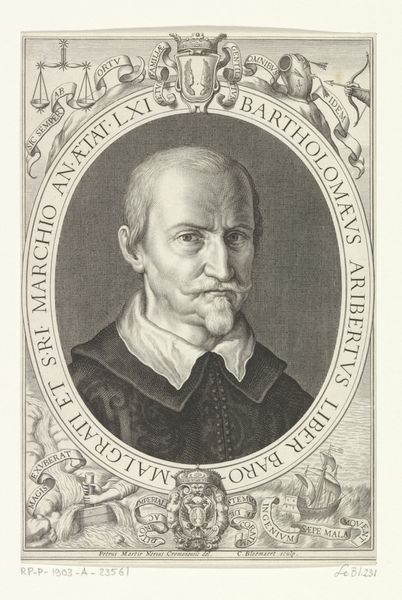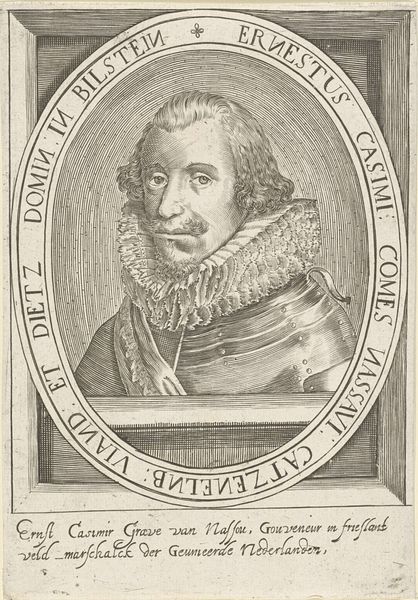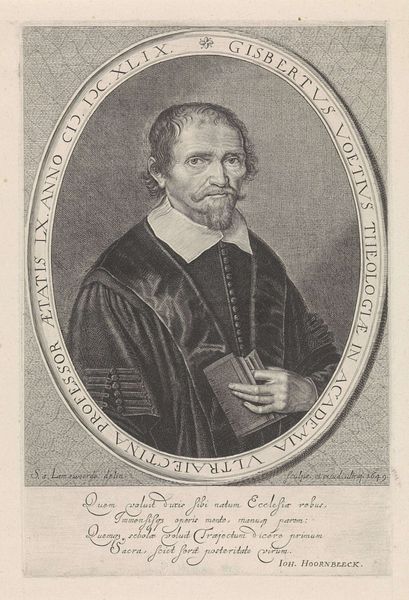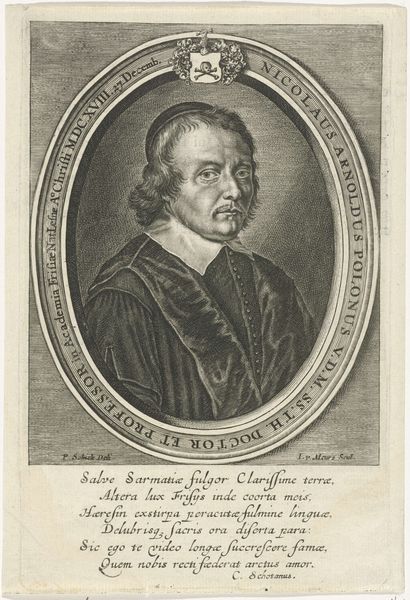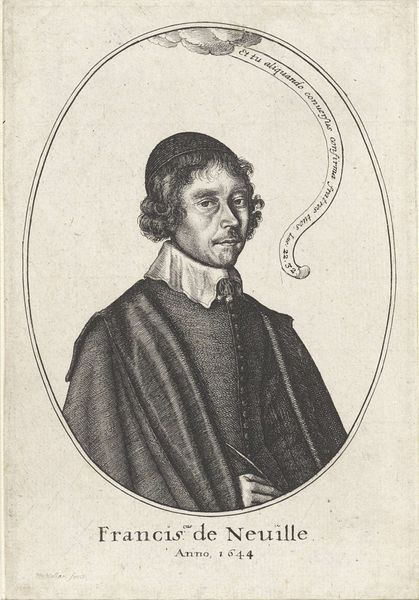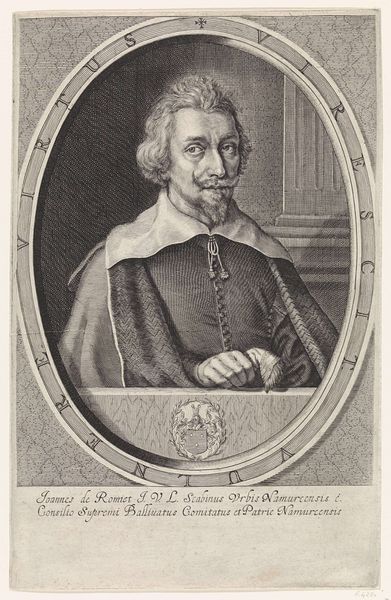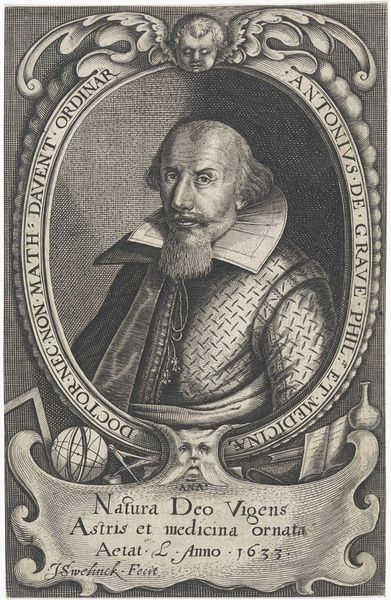
print, engraving
#
portrait
#
baroque
# print
#
old engraving style
#
form
#
line
#
portrait drawing
#
history-painting
#
engraving
Dimensions: height 141 mm, width 85 mm
Copyright: Rijks Museum: Open Domain
Jacobus Harrewijn produced this print of Petrus Lambertus, probably in the Dutch Republic during the late 17th or early 18th century. In its formal construction and attention to fine detail, the image provides insight into the social values of the time. Prints like this were often commissioned to commemorate important figures and circulate their image within a specific community. Note the Latin inscription that frames the portrait, indicating Lambertus’s status within the church. The heraldic symbols at the bottom further solidify his identity and lineage. The meticulous rendering of Lambertus's features and clothing suggests a desire to convey not just likeness, but also status and authority. This image would have reinforced social hierarchies, presenting Lambertus as a figure of respect and influence. Understanding this print requires that we consider the social function of portraiture in the Dutch Republic and the role of religious institutions in shaping individual identities. By consulting historical records, genealogical archives, and period documents, we can gain a deeper appreciation.
Comments
No comments
Be the first to comment and join the conversation on the ultimate creative platform.



